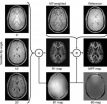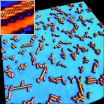(Press-News.org) Magnetic reconnection can trigger geomagnetic storms that disrupt cell phone service, damage satellites and black out power grids. But how reconnection, in which the magnetic field lines in plasma snap apart and violently reconnect, transforms magnetic energy into explosive particle energy remains a major unsolved problem in plasma astrophysics. Magnetic field lines represent the direction, and indicate the shape, of magnetic fields.
Now scientists at the U.S. Department of Energy's (DOE) Princeton Plasma Physics Laboratory (PPPL) have taken a key step toward a solution, as described in a paper published this week in the journal Nature Communications. In research conducted on the Magnetic Reconnection Experiment (MRX) at PPPL, the scientists not only identified how the mysterious transformation takes place, but measured experimentally the amount of magnetic energy that turns into particle energy. This work was supported by the DOE Office of Science.
The investigation showed that reconnection converts about 50 percent of the magnetic energy, with one-third of the conversion heating the electrons and two-thirds accelerating the ions — or atomic nuclei — in the plasma. In large bodies like the sun, such converted energy can equal the power of millions of tons of TNT.
"This is a major milestone for our research," said Masaaki Yamada, the principal investigator for the MRX and first author of the Nature Communications paper. "We can now see the entire picture of how much of the energy goes to the electrons and how much to the ions in a prototypical reconnection layer."
The findings also suggested the process by which the energy conversion occurs. Reconnection first propels and energizes the electrons, according to the researchers, and this creates an electrically charged field that "becomes the primary energy source for the ions," said Jongsoo Yoo, a postdoctoral fellow at PPPL and coauthor of the paper. Also contributing to the paper were physicists Hantao Ji and Russell Kulsrud, and doctoral candidates Jonathan Jara-Almonte and Clayton Myers.
If confirmed by data from space explorations, the PPPL results could help resolve decades-long questions and create practical benefits. These could include a better understanding of geomagnetic storms that could lead to advanced warning of the disturbances and an improved ability to cope with them. Researchers could shut down sensitive instruments on communications satellites, for example, to protect the instruments from harm.
The PPPL team will eagerly watch a four-satellite mission that NASA plans to launch next year to study reconnection in the magnetosphere — the magnetic field that surrounds the Earth. The team plans to collaborate with the venture, called the Magnetospheric Multiscale (MMS) Mission, by providing MRX data to it. The MMS probes could help to confirm the Laboratory's findings.
INFORMATION:
PPPL, on Princeton University's Forrestal Campus in Plainsboro, N.J., is devoted to creating new knowledge about the physics of plasmas — ultra-hot, charged gases — and to developing practical solutions for the creation of fusion energy. Fusion takes place when atomic nuclei fuse and release a burst of energy. This compares with the fission reactions in today's nuclear power plants, which operate by splitting atoms apart.
Results of PPPL research have ranged from a portable nuclear materials detector for anti-terrorist use to universally employed computer codes for analyzing and predicting the outcome of fusion experiments. The Laboratory is managed by the University for the U.S. Department of Energy's Office of Science, which is the single largest supporter of basic research in the physical sciences in the United States, and is working to address some of the most pressing challenges of our time. For more information, please visit science.energy.gov.
Contact: John Greenwald
jgreenwa@pppl.gov
Office: 609-243-2672
Mobile: 609-610-6480
PPPL scientists take key step toward solving a major astrophysical mystery
2014-09-10
ELSE PRESS RELEASES FROM THIS DATE:
MRI shows gray matter myelin loss strongly related to MS disability
2014-09-10
OAK BROOK, Ill. – People with multiple sclerosis (MS) lose myelin in the gray matter of their brains and the loss is closely correlated with the severity of the disease, according to a new magnetic resonance imaging (MRI) study. Researchers said the findings could have important applications in clinical trials and treatment monitoring. The study appears online in the journal Radiology.
Loss of myelin, the fatty protective sheath around nerve fibers, is a characteristic of MS, an inflammatory disease of the central nervous system that can lead to a variety of serious neurological ...
Parents' separation found to boost children's behavior problems, but only in high-income families
2014-09-10
Before they reach young adulthood, most children in the United States will experience their parents separating, divorcing, finding another partner, or getting remarried.
Research tells us that children have more behavior problems (such as aggression and defiance) when families change structure. Now a new study has found that behavior problems in children increased in families in which parents separated only in higher-income families, and that children's age also played a part in their likelihood of having behavior problems.
The study, by researchers at Georgetown University ...
Mothers' responses to babies' crying: Benefiting from and getting over childhood experiences
2014-09-10
Research has told us that infants whose mothers respond quickly, consistently, and warmly when they cry have healthier emotional development than infants whose mothers are less sensitive to their cries. A new study has found that mothers whose childhood experiences with caregivers was positive and those who have come to terms with negative experiences are more infant-oriented when they see videos of babies crying and respond more sensitively to their own babies' cries.
The study, by researchers at the University of North Carolina at Greensboro, with input from colleagues ...
When talking about body size, African-American women and doctors may be speaking different languages
2014-09-10
PHILADELPHIA, PA, September 10, 2014 – African American women and their female children have the highest obesity prevalence of any demographic group and are more likely to underestimate their body weight than white women. Yet, according to new research from Rush University Medical Center, cultural norms for body size may prevent awareness among many African American women about the potential health benefits they and others in their cultural group might achieve through weight loss.
Led by Elizabeth Lynch, PhD, this research recruited African American women in a low-income ...
Smartphones may aid in dietary self-monitoring
2014-09-10
PHILADELPHIA, PA, September 10, 2014 – Smartphones have seen wide adoption among Americans in recent years because of their ease of use and adaptability. With that in mind, researchers from Arizona State University examined how smartphone use affected weight loss goals and determined that smartphones may offer users an advantage over traditional methods when tracking diet data.
Roughly 83% of Americans now own a mobile phone and 45% own smartphones with Internet access. For this study, researchers recruited healthy, weight-stable adults and semirandomly divided them ...
Molecular self-assembly controls graphene-edge configuration
2014-09-10
Sendai, Japan – A research team headed by Prof. Patrick Han and Prof. Taro Hitosugi at the Advanced Institute of Materials Research (AIMR), Tohoku University discovered a new bottom-up fabrication method that produces defect-free graphene nanoribbons (GNRs) with periodic zigzag-edge regions. This method, which controls GNR growth direction and length distribution, is a stepping stone towards future graphene-device fabrication by self-assembly.
Graphene, with its low dimensionality, high stability, high strength, and high charge-carrier mobility, promises to be a revolutionary ...
Temple University researchers identify a new target for treating heart failure
2014-09-09
As a heart fails, losing its ability to squeeze blood through the circulatory system, the body releases a neurohormone that interferes with the heart's best chance to improve contractility, a team of Temple University School of Medicine researchers show in a study published September 9th in the American Heart Association journal, Circulation.
The discovery reveals a promising target for the treatment of end-stage heart failure, and raises intriguing questions about why a drug used to treat some forms of end-stage heart failure improves symptoms but fails to extend lives ...
UT Southwestern expert co-chairs national team to develop first comprehensive guidelines for management of sickle cell disease
2014-09-09
DALLAS – September 9, 2014– The National Heart, Lung, and Blood Institute (NHLBI) has released the first comprehensive, evidence-based guidelines for management of sickle cell disease from birth to end of life, based on recommendations developed by a nationwide team of experts co-chaired by a UT Southwestern Medical Center hematologist.
Appearing today in JAMA, the guidelines are intended for general use by pediatricians, physicians treating adults, hematologists, emergency room personnel, hospitalists, and other health care providers. The new management guidelines consist ...
Nearly 1 in 5 new nurses leave first job within a year, according to RN survey
2014-09-09
Turnover of registered nurses (RNs) is an important and widely used measure in analyzing the health care workforce. It's used to project the job market for nurses (based on availability of jobs) and can also be considered an indicator of whether a health care organization has a good working environment.
A study in the current issue of Policy, Politics & Nursing Practice reveals that an estimated 17.5 percent of newly-licensed RNs leave their first nursing job within the first year and one in three (33.5%) leave within two years. The researchers found that turnover for ...
Less effective DNA repair process takes over as mice age
2014-09-09
As we and other vertebrates age, our DNA accumulates mutations and becomes rearranged, which may result in a variety of age-related illnesses, including cancers. Biologists Vera Gorbunova and Andei Seluanov have now discovered one reason for the increasing DNA damage: the primary repair process begins to fail with increasing age and is replaced by one that is less accurate.
The findings have been published in the journal PLOS Genetics.
"Scientists have had limited tools to accurately study how DNA repair changes with age," said Gorbunova. "We are now able to measure ...



